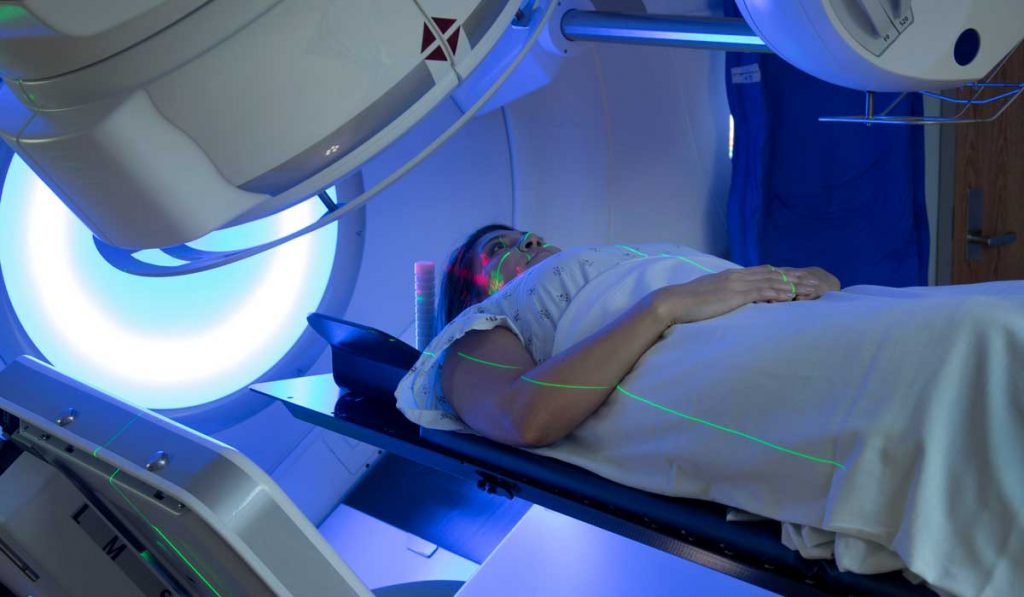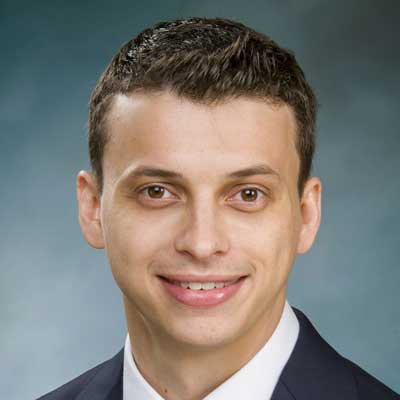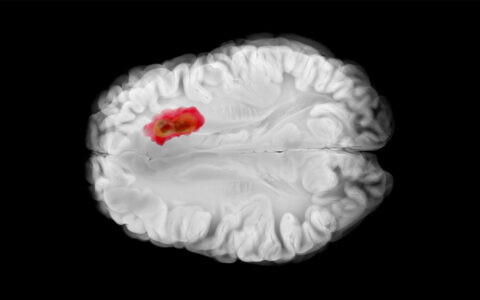“Once this is broadly adopted, it will turn our approach to radiotherapy on its head,” said Christien Kluwe, M.D., about Ethos™, a new AI adaptive radiotherapy technology that he says helps enable more patients to complete their treatment course with lower risks of side effects. Kluwe is a radiation oncologist and an assistant professor of medicine at Vanderbilt University Medical Center, one of the first institutions to adopt this technology.
Built into a linear accelerator, Ethos works as a smart partner for radiation therapy teams. It revises the original intensity modulated radiation therapy plan by factoring in data from a new CT performed each day before treatment. In 15 minutes, it updates the entire plan – created using multiple modalities – to reflect the current positions of a patient’s tumor and surrounding structures. “This is particularly useful in pelvic cancers where the organs and tumor move with how full the bladder, intestines or rectum are each day,” Kluwe said.
“We are now seeing the potential benefits of adaptive therapy with its ability to reduce radiation dose to normal organs,” said Eric Shinohara, M.D., Ingram Associate Professor and Chair of the Department of Radiation Oncology at Vanderbilt. He anticipates extending Ethos’ use from pelvic tumors to others such as head and neck and lung cancers. However, tumors that are stationary or have metastasized are generally not candidates. “We don’t use it where it doesn’t add value,” he said.
Built Over Days, Rebuilt in Minutes
When a patient is slated for radiation therapy, a team of radiation oncologists, dosimetrists and medical physicists work together over four to five days to establish a plan, Shinohara says, which is repeated daily for the entire course of treatment. Architects of the plan must precisely define the tumor and normal organs, establish correct doses and angles for the linear accelerator, and perform quality assurance checks.
“We are now seeing the potential benefits of adaptive therapy with its ability to reduce radiation dose to normal organs.”
In standard practice, this plan is then applied daily for six to eight weeks of treatment. Great care is taken to return the patient to the same position day after day to optimize the targeting or sparing of anatomy.
In contrast, Ethos provides a daily “refresh.” Using AI, it defines angles to fit the contours of the tumor and normal organs and performs dose calculation and optimization – for that day. “We can toggle between the two plans and see how big the difference is today. Sometimes it is massive,” Kluwe said. The team is able to review the new plan and typically finish the entire treatment session in 20-30 minutes.
A Diminished “Fudge Factor”
“Rule number one is treat the tumor,” Kluwe said. “To do this has always required a fudge factor of up to two centimeters or so around the tumor to allow for location uncertainty over the course of treatment. This increases the risk of toxicity, raising the potential of aborting or pausing treatment if a patient can’t tolerate the side effects. With Ethos, we lower this risk and also raise our confidence that we are treating all of the tumor.”
Kluwe cites the example of a patient whose bladder is holding 500 mL of urine on the initial scan day, but only holding 250 mL the next. “I can now account for that change,” he said. In doing so, he can protect organs like the small bowel, which cannot tolerate high doses. “Now, I no longer have to inject that big margin.”
New Radiotherapy Applications, Predictive Powers
Vanderbilt’s medical physics team is working with Ethos’ manufacturer, Varian, to develop protocols and probe areas for further research. As Vanderbilt accrues cases, Kluwe says they will be better able to predict toxicity odds at various levels of treatment.
“Soon we will have the iterative data to make more accurate estimates.”
“Without a granular knowledge of how much healthy tissue we are radiating, we might operate under the assumption that treating 20 percent of the bladder to a threshold dose carries a five percent risk of toxicity, but this is a gray area,” he said. “Soon we will have the iterative data to make more accurate estimates.” He also foresees shorter treatment regimens with this improved precision.
Kluwe is gratified by the quality of life advantages for his patients. “One of the hardest things is getting to week three or four with a patient, and having them feel sick because the radiation is extending outside our tumor target. Many require daily medications to combat symptoms, and for some, a treatment pause. With more precise tools, this is becoming a rarity.”





